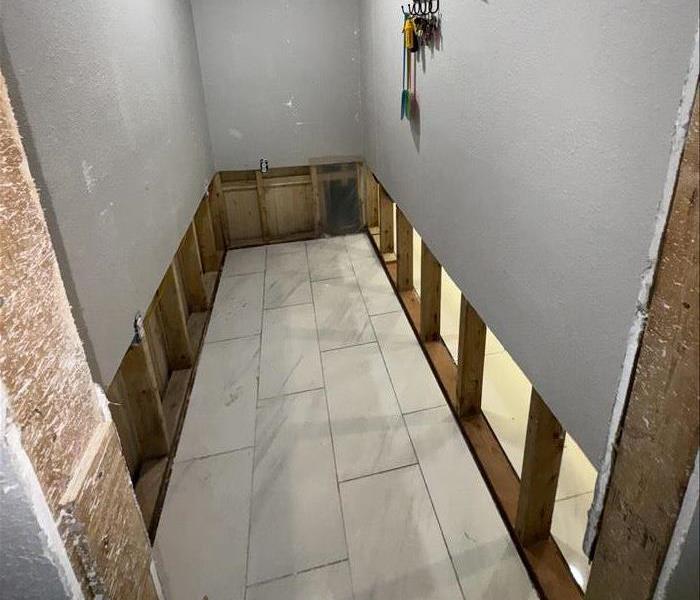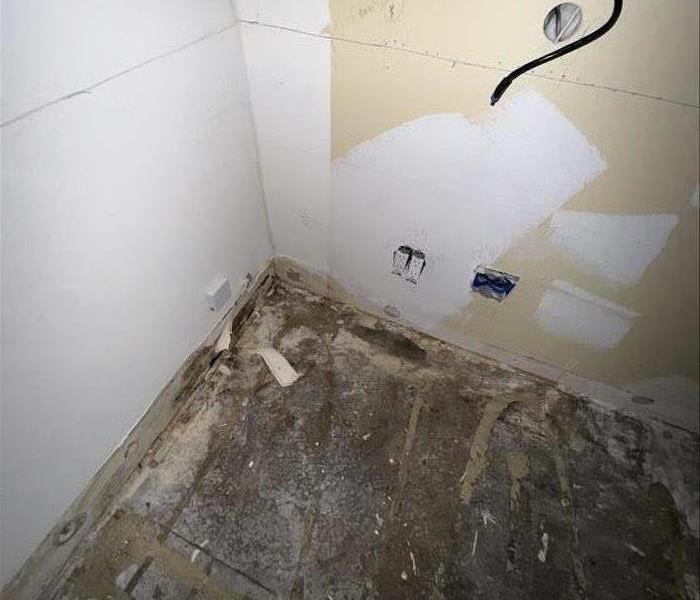Recent Posts
Healing After the Flames: Understanding the Psychological Impact of Fire Damage
12/12/2024 (Permalink)
Fire damage is not just a physical loss; it also leaves emotional and psychological scars. When a fire strikes, the immediate aftermath involves assessing property damage and initiating restoration. However, one critical aspect often overlooked is the profound psychological impact that fire damage can have on homeowners, families, and even business owners. Fire damage disrupts lives, and its emotional toll can be long-lasting. In this blog, we will explore the emotional challenges that come with fire damage and discuss ways to manage the psychological effects, as well as how professionals like SERVPRO of North Fort Myers can help ease the burden during the recovery process.
The Immediate Emotional Impact
The shock of experiencing a fire is overwhelming. Whether the damage is minimal or severe, the sudden loss of control over one’s home or business can cause immense stress. Individuals may feel vulnerable, uncertain, and even afraid. The sight of burned belongings, soot-stained walls, and destruction can evoke feelings of helplessness and grief. It’s not just the loss of possessions that affects individuals but also the feeling of losing safety and comfort. For many, homes and businesses represent security, and fire damage can shatter this perception.
Long-Term Emotional Struggles
Beyond the immediate reaction, fire victims may experience long-term emotional and psychological effects. This can include anxiety about future risks, depression from the loss of personal mementos, and even post-traumatic stress disorder (PTSD) in more severe cases. Children are particularly vulnerable, often developing fear and confusion, which can manifest in behavioral changes such as nightmares or clinging to parents. Adults, too, may have difficulty coping, feeling overwhelmed by the responsibility of rebuilding their lives. Moreover, the restoration process itself can prolong emotional distress as families and business owners face uncertainties and disruptions to their routines.
Coping with the Psychological Aftermath
Managing the psychological impact of fire damage requires time and support. Seeking emotional help through counseling or support groups can provide an outlet for those struggling to process their feelings. Sharing experiences with others who have faced similar situations can help individuals realize that they are not alone in their recovery journey. It's also essential to acknowledge feelings of loss and grief, as suppressing emotions can worsen mental health outcomes.
How SERVPRO® Can Help
Professional restoration services, like SERVPRO of North Fort Myers, can ease some of the stress associated with fire damage recovery. By providing swift and effective restoration, SERVPRO helps minimize the physical reminder of the event, allowing families and business owners to focus on rebuilding their emotional well-being. SERVPRO's comprehensive services include fire damage cleanup, smoke odor removal, and restoring damaged property to its pre-fire condition, helping to restore a sense of normalcy.
While the emotional scars of fire damage may not be as visible as the physical ones, addressing both is crucial for complete recovery. Through proper support, coping strategies, and professional assistance, individuals can begin to heal and rebuild their lives after a fire.
How Accurate Are Air Mold Tests? Understanding Their Role in Mold Detection
11/15/2024 (Permalink)
Air mold tests are commonly used to determine if a home or commercial building has mold issues. They measure the concentration of mold spores in the air, which can help identify potential mold problems, especially when the mold isn’t visible. But how accurate are these tests, and can they provide the reliable information needed to address mold issues effectively? Let’s explore the reliability of air mold tests and when professional services like those offered by SERVPRO® are necessary.
Understanding Air Mold Tests
Air mold tests work by capturing mold spores from the air onto a collection device, which is then sent to a lab for analysis. The lab identifies the types of mold present and their concentrations. This can be useful in:
- Identifying hidden mold growth
- Detecting elevated mold spore levels that might not be visible to the naked eye
- Determining whether remediation efforts were successful
While these tests can provide valuable insights, they come with limitations that impact their overall accuracy.
Factors Affecting Air Mold Test Accuracy
Several factors can influence the accuracy of air mold tests, including:
- Mold Spore Levels Fluctuate: Mold spore levels in the air can vary throughout the day depending on factors like temperature, humidity, and airflow. An air sample taken at one point in time may not reflect overall mold activity in a building.
- Sampling Locations: The results of an air mold test depend on where the sample is taken. For instance, testing in one room may show elevated mold levels, but another room may have different results. Without testing in multiple locations, the results can be inconsistent or misleading.
- Types of Mold Detected: Air mold tests can identify common types of mold but may not be as effective in identifying all species. Some molds release spores sporadically, and others may not release airborne spores at all. This can lead to false negatives in an air mold test.
- Indoor vs. Outdoor Air: Mold spores are naturally present in outdoor air, so mold tests will often show some level of spores in any home. The challenge is determining if indoor levels are higher than what’s naturally occurring outside. This comparison can be complicated, and misinterpretations can occur.
Are Air Mold Tests Alone Enough?
While air mold tests provide useful data, they are not always sufficient for a full diagnosis of mold issues. A high mold spore count may indicate a problem, but it doesn’t reveal where the mold is growing or the extent of the issue. Similarly, a low mold count doesn’t always mean a home is mold-free.
For this reason, air mold tests are most effective when combined with a thorough visual inspection and moisture testing. SERVPRO’s mold remediation experts can conduct a comprehensive assessment, using both air testing and physical inspections to locate and address the root causes of mold problems.
When to Call SERVPRO for Professional Mold Remediation
If air mold tests suggest a potential mold issue or if you notice signs like musty odors, water stains, or visible mold, it’s crucial to address the problem immediately. SERVPRO offers professional mold remediation services that include advanced mold detection, thorough cleaning, and preventive solutions to stop mold from coming back. Our trained technicians can also help interpret air mold test results to ensure you receive an accurate diagnosis.
It is best to pair air testing with a thorough inspection by mold remediation professionals like SERVPRO of North Fort Myers. This comprehensive approach ensures that any mold problem is correctly identified and effectively treated, protecting both your property and peace of mind.
Business Continuity Planning: Preparing for Water Damage Disruptions
9/16/2024 (Permalink)
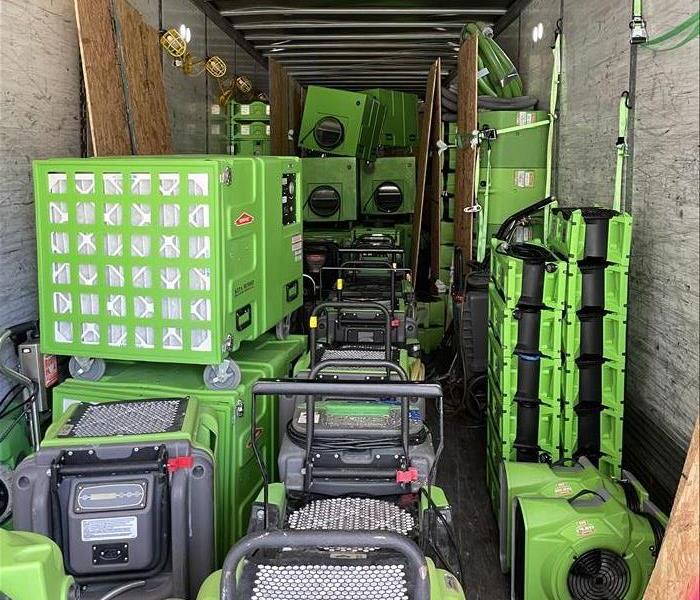 At SERVPRO, we are committed to helping businesses prepare for and recover from water damage.
At SERVPRO, we are committed to helping businesses prepare for and recover from water damage.
Water damage can strike unexpectedly, whether from a burst pipe, flooding, or severe weather. For businesses, water damage isn't just about the immediate cleanup—it's about minimizing downtime and ensuring the company can continue operating despite disruptions. At SERVPRO®, we understand the importance of a solid business continuity plan to help you prepare for and recover from water damage efficiently. Here’s how you can safeguard your business and ensure continuity in the face of water damage.
Assessing Water Damage Risks
The first step in creating a business continuity plan for water damage is to assess potential risks. This involves identifying areas of your facility that are most vulnerable to water intrusion, such as basements, low-lying areas, or spaces with heavy plumbing. Additionally, consider external factors like your business’s proximity to bodies of water or your area’s flood history. Understanding these risks allows you to take preventative measures, such as installing sump pumps, waterproofing basements, or even relocating critical equipment to higher ground.
Developing a Response Plan
Once you’ve identified the risks, the next step is to develop a comprehensive response plan. This plan should outline the steps to take immediately after water damage occurs, such as shutting off water sources, moving valuable items to safety, and contacting a professional water damage restoration company like SERVPRO. It’s also essential to establish a communication protocol to keep employees informed and provide instructions on how to proceed. The quicker the response, the less severe the disruption to your operations.
Protecting Critical Business Functions
One of the most critical aspects of business continuity planning is ensuring that essential functions can continue, even in the event of water damage. Identify which business functions are vital to your operations—this could include manufacturing processes, customer service, or IT systems. For each of these functions, create contingency plans, such as setting up remote work capabilities, securing offsite backups for important data, or identifying alternative suppliers. By doing so, you can maintain business operations even when your primary facility is affected.
Collaborating with a Professional Restoration Company
Working with a professional restoration company like SERVPRO is crucial to your water damage preparedness. Establishing a relationship with us before an emergency occurs ensures that we are familiar with your facility and can respond quickly to mitigate damage. We offer emergency response planning services that include a detailed evaluation of your property and a customized plan for swift action in the event of water damage. Our expertise in water damage restoration means we can help you get your business back to normal with minimal disruption.
Regularly Updating Your Continuity Plan
Your business continuity plan should be a living document, updated regularly to reflect changes in your business operations, new risks, or lessons learned from previous incidents. Schedule regular reviews of the plan and conduct drills to ensure that all employees know their roles and responsibilities. The more prepared your business is, the faster it can recover from water damage disruptions.
At SERVPRO, we are committed to helping businesses prepare for and recover from water damage. With a robust business continuity plan in place, you can face water damage challenges head-on, ensuring the resilience of your operations and the safety of your assets.
Post-Storm Recovery: Assessing and Repairing Structural Damage
9/11/2024 (Permalink)
Ft. Myers, Florida, is no stranger to severe storms and hurricanes. The aftermath of such weather events often leaves homes and buildings vulnerable to significant structural damage. Knowing how to assess and address this damage promptly and effectively is crucial for ensuring the safety and integrity of your property. In this blog, we'll guide you through the steps to assess structural damage after a severe storm and provide tips for recovery.
Safety First
- Wait for Clearance: Before returning to your property, ensure local authorities have declared it safe to do so. There may be hazards like downed power lines or flooding.
- Wear Protective Gear: Use sturdy shoes, gloves, and a hard hat if necessary when inspecting your property.
Exterior Inspection
- Check the Roof: Look for missing or damaged shingles, tiles, or metal roofing. Check for sagging areas, which could indicate structural damage.
- Inspect Walls and Siding: Examine exterior walls for cracks, holes, or missing siding. Note any leaning or bowing walls, which are signs of serious structural issues.
- Foundation: Look for cracks or shifts in the foundation. Uneven floors inside can also indicate foundation problems.
- Windows and Doors: Check for broken glass, damaged frames, or doors that no longer close properly.
Interior Inspection
- Ceilings and Walls: Inspect for water stains, cracks, or bulging, which can indicate roof leaks or structural movement.
- Floors: Look for warping, buckling, or soft spots. These could indicate water damage or foundation issues.
- Attic and Basement: Examine these areas for signs of water intrusion, mold, or structural damage like cracked beams or joists.
Electrical and Plumbing Systems
- Electrical System: Check for exposed wires, tripped breakers, or scorch marks around outlets and switches. Do not attempt to repair electrical issues yourself.
- Plumbing: Look for leaks, damaged pipes, or signs of water damage around plumbing fixtures.
Documenting Damage
- Take Photos and Videos: Document all visible damage with clear photos and videos. This will be essential for insurance claims.
- Detailed Notes: Write detailed descriptions of the damage, including the date and time of the storm and the extent of the damage.
Contacting Your Insurance Company
- Report the Damage: Contact your insurance company as soon as possible to report the damage and initiate the claims process.
- Provide Documentation: Submit your photos, videos, and detailed notes to support your claim.
- Understand Your Coverage: Review your insurance policy to understand what is covered and any deductibles you may need to pay.
Professional Assessment and Repairs
- Hire a Professional Inspector: Consider hiring a licensed structural engineer or building inspector to conduct a thorough assessment of your property.
- Get Repair Estimates: Obtain multiple repair estimates from reputable contractors. Ensure they are licensed and insured.
- Prioritize Repairs: Address the most critical repairs first, such as structural issues, roof damage, and broken windows.
Preventing Future Damage
- Reinforce Your Roof: Use hurricane straps or clips to secure your roof and reduce the risk of wind damage.
- Impact-Resistant Windows: Consider installing impact-resistant windows and doors to protect against flying debris.
- Proper Drainage: Ensure your property has proper drainage systems to prevent water from pooling around your foundation.
- Secure Outdoor Items: Anchor outdoor furniture, grills, and other loose items to prevent them from becoming projectiles during a storm.
Assessing structural damage after a severe storm in Ft. Myers, Florida, requires careful inspection and prompt action. Prioritize safety, document the damage thoroughly, and work with professionals to ensure your property is restored to its pre-storm condition. By taking proactive steps and being prepared, you can minimize the impact of future storms and protect your home or business from severe weather events. Remember, the key to recovery is a well-organized and timely response, SERVPRO of North Fort Myers is here to help®!
Can You Salvage Drywall After Smoke Damage? Expert Tips and Insights
8/12/2024 (Permalink)
Smoke damage is one of the most pervasive problems following a fire, and it can have lasting effects on your property, particularly on drywall. Drywall is a common material in homes and businesses, and understanding whether it can be salvaged after smoke damage is crucial for effective restoration. In this blog, we will explore the factors that determine if smoke-damaged drywall can be saved and how professional services, like those offered by SERVPRO®, can assist in this process.
Understanding Smoke Damage
- Types of Smoke Residue: Different fires produce different types of smoke residue, such as wet smoke, dry smoke, fuel oil soot, and protein smoke. Each type interacts with surfaces in unique ways, impacting the restoration approach.
- Penetration and Absorption: Smoke particles can penetrate porous materials like drywall, leading to lingering odors and discoloration. The extent of penetration often determines whether the drywall can be salvaged or needs to be replaced.
Factors Influencing Salvageability
- Extent of Damage: The degree of smoke damage is a critical factor. Light surface soot can often be cleaned, but heavy, greasy residues or extensive charring may require replacement of the drywall.
- Duration of Exposure: The longer the smoke residues have been in contact with the drywall, the harder it is to clean. Prompt action is essential to improve the chances of salvaging the material.
- Structural Integrity: If the drywall has been compromised structurally due to intense heat or moisture from firefighting efforts, it may need to be replaced regardless of the level of smoke damage.
Steps to Salvage Smoke-Damaged Drywall
- Initial Assessment:
- Professional Inspection: Begin with a thorough inspection by professionals, like SERVPRO, who can accurately assess the extent of smoke damage. This includes identifying the type of smoke residue and the affected areas.
- Determine Salvageability: Based on the assessment, professionals can determine whether the drywall can be cleaned and restored or if it needs to be replaced.
- Cleaning and Deodorizing:
- Surface Cleaning: Light smoke residues can often be cleaned using specialized cleaning agents and techniques. SERVPRO utilizes advanced cleaning products designed to remove soot and smoke particles from drywall surfaces.
- Deep Cleaning: For more extensive smoke damage, deep cleaning methods such as dry sponging or chemical sponges may be used to lift smoke residues from the surface.
- Odor Removal: Removing smoke odors is crucial. SERVPRO employs techniques like thermal fogging, ozone treatments, and hydroxyl generators to neutralize odors embedded in the drywall.
- Sealing and Priming:
- Sealing: After cleaning, it may be necessary to seal the drywall to prevent any residual odors from escaping. A sealant creates a barrier and prepares the surface for repainting.
- Priming: Applying a primer designed to block stains and odors ensures that any residual smoke stains do not bleed through the new paint.
- Replacement When Necessary:
- Remove and Replace: If the drywall is heavily damaged, charred, or structurally compromised, replacing it is the best option. SERVPRO can efficiently remove damaged drywall and install new panels, ensuring a seamless restoration.
- Proper Disposal: Proper disposal of contaminated materials is essential to prevent further issues. SERVPRO handles the safe and compliant disposal of damaged drywall.
Why Choose SERVPRO for Smoke Damage Restoration?
- Expertise and Experience: SERVPRO professionals are trained in the latest restoration techniques and have extensive experience handling smoke damage. They can quickly assess the situation and determine the best course of action.
- Advanced Equipment and Techniques: SERVPRO utilizes state-of-the-art equipment and specialized cleaning agents to effectively remove smoke residues and odors, improving the chances of salvaging drywall.
- Comprehensive Services: From initial assessment and cleaning to sealing and replacement, SERVPRO provides a full range of services to restore your property to its pre-fire condition.
- Insurance Coordination: SERVPRO works closely with insurance companies to streamline the claims process, providing detailed documentation and ensuring that restoration work is covered.
Salvaging smoke-damaged drywall depends on the extent of the damage, the type of smoke residue, and the duration of exposure. With prompt and professional intervention, it is often possible to clean and restore drywall, saving time and money. SERVPRO’s expertise and comprehensive restoration services make them an excellent choice for handling smoke damage. If your property has been affected by a fire, contact SERVPRO of North Fort Myers to ensure thorough and effective restoration of your drywall and other affected areas.
Rental Property Water Damage: Landlord and Tenant Responsibilities
6/12/2024 (Permalink)
 We will outline the landlord and tenant responsibilities related to rental property water damage to help you navigate this situation.
We will outline the landlord and tenant responsibilities related to rental property water damage to help you navigate this situation.
Water damage in rental properties can present challenges for both landlords and tenants, as it involves understanding and fulfilling specific responsibilities to address the damage effectively. Knowing the roles and obligations of both parties is essential to ensuring timely and appropriate action in the event of rental property water damage. In this blog, we will outline the landlord and tenant responsibilities related to rental property water damage to help you navigate this situation with clarity and confidence.
Landlord Responsibilities
- Maintenance and Repairs: Landlords are generally responsible for maintaining the property in a habitable condition, which includes addressing issues related to water damage. The landlord must promptly repair any water leaks, plumbing issues, or structural damage that may lead to or result from water intrusion.
- Insurance Coverage: Landlords typically carry property insurance that covers structural damage to the rental property. In the event of water damage, the landlord's insurance may help cover the costs of repairs and restoration, depending on the policy terms.
- Professional Restoration: If the extent of the water damage requires professional restoration services, landlords are responsible for arranging and overseeing the restoration process. Engaging a reputable restoration company like SERVPRO® can help ensure thorough and efficient water damage mitigation and restoration.
- Communication: Landlords should maintain open communication with tenants regarding water damage issues, restoration plans, and any necessary precautions during the restoration process. Clear and timely communication can help minimize misunderstandings and streamline the restoration efforts.
Tenant Responsibilities
- Reporting Water Damage: Tenants have a responsibility to promptly report any water damage or signs of potential water intrusion to the landlord or property management. Early detection and reporting of water damage can prevent further damage and expedite the restoration process.
- Taking Precautions: During a water damage incident, tenants should take necessary precautions to protect themselves and their belongings. This may include safely evacuating the property if necessary, unplugging electrical devices, and avoiding contact with standing water.
- Cooperation with Restoration: Tenants are expected to cooperate with the restoration process initiated by the landlord or restoration company. This may involve allowing access to the property for inspection, mitigation, and restoration purposes as needed.
Documentation and Documentation
Both landlords and tenants should document the water damage incident, including any communication exchanges, damage assessments, repair estimates, and restoration progress. This documentation can serve as valuable evidence for insurance claims and disputes.
Seeking Professional Assistance
In cases of extensive or severe water damage to rental properties, both landlords and tenants may benefit from seeking professional assistance from a reputable restoration company like SERVPRO. Professional technicians can assess the damage, implement effective restoration strategies, and ensure that the property is restored to a safe and habitable condition.
Understanding the respective responsibilities of landlords and tenants in the event of rental property water damage is essential for a coordinated and efficient response. By proactively addressing water damage issues, communicating effectively, and working collaboratively, both parties can contribute to successful water damage mitigation and restoration efforts. Trust in the expertise and support of SERVPRO to assist with rental property water damage restoration and ensure that your property is restored to pre-damage conditions promptly and professionally.
Tips for Minimizing Water Damage During Hurricane Season
5/15/2024 (Permalink)
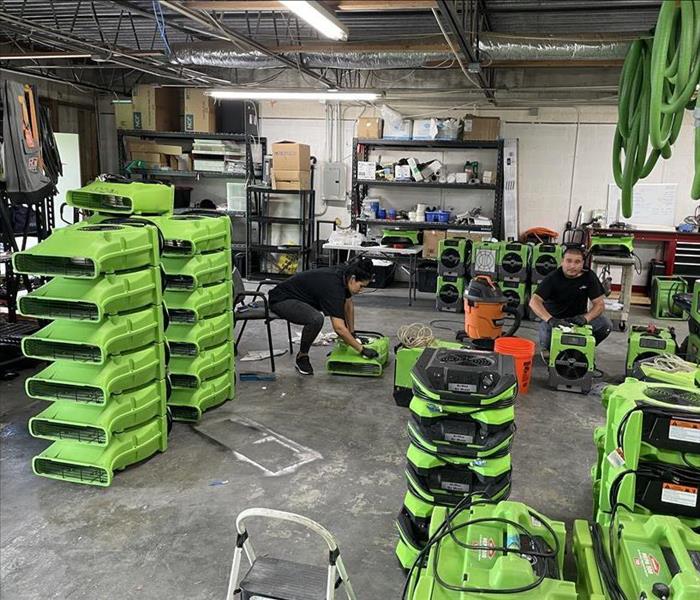 In this blog, we will explore some valuable tips to help you protect your property from water damage during hurricane season.
In this blog, we will explore some valuable tips to help you protect your property from water damage during hurricane season.
Hurricane season brings with it the potential for significant water damage to homes and properties. As a homeowner, it is essential to take proactive steps to minimize the risk and impact of water damage during this time. In this blog, we will explore some valuable tips to help you protect your property from water damage during hurricane season.
Clear and Secure Gutters and Downspouts
Before hurricane season arrives, make sure your gutters and downspouts are clear of debris. Clogged gutters can cause water to overflow and accumulate near the foundation of your home, increasing the risk of flooding. Ensure downspouts are directed away from the foundation, allowing water to flow freely and reducing the chance of water seepage into your home.
Inspect and Maintain Your Roof
A well-maintained roof is your first line of defense against water damage during a hurricane. Inspect your roof for any loose or damaged shingles, cracks, or weakened areas. Address any necessary repairs promptly to prevent water from infiltrating your home. Consider having a professional roofer conduct a thorough inspection and reinforce vulnerable areas if needed.
Seal Doors and Windows
Leaking doors and windows can lead to significant water damage during a hurricane. Ensure they are properly sealed to keep water out. Replace worn-out weatherstripping and use caulking to seal any gaps or cracks. Consider installing storm shutters or impact-resistant windows to provide an added layer of protection.
Elevate Appliances and Utilities
If your home is located in an area prone to flooding, consider elevating appliances and utilities, such as your water heater, furnace, washer, and dryer. Raising these items can help prevent water damage in the event of a flood. Consult with a professional to determine the appropriate height for elevation.
Install a Sump Pump
A sump pump can be an effective tool for preventing or minimizing water damage during a hurricane. It helps remove excess water from your basement or lower levels of your home. Install a reliable sump pump system and ensure it is regularly maintained to ensure it functions properly when needed.
Keep Important Documents and Valuables Safe
Make digital copies of important documents such as insurance policies, identification papers, and photographs, and store them securely in the cloud or on external hard drives. Use waterproof and fire-resistant safes to protect physical documents and valuables. Having backups ensures you can quickly access vital information in the event of water damage or a natural disaster.
Create a Flood Emergency Plan
Prepare a flood emergency plan for your family. Identify evacuation routes, establish a communication plan, and designate a safe meeting place. Store emergency supplies, including non-perishable food, drinking water, flashlights, batteries, and a battery-operated weather radio. Stay informed about weather updates and heed evacuation orders issued by local authorities.
Contact a Professional Restoration Company
In the unfortunate event that your property does experience water damage during a hurricane, it is crucial to contact a professional restoration company like SERVPRO® immediately. Trained and experienced technicians will respond promptly to mitigate the damage and begin the restoration process. Professional restoration services can help salvage your belongings, prevent mold growth, and restore your home to its preloss condition.
By following these tips, you can significantly reduce the risk and impact of water damage during hurricane season. Remember that preparation is key, so take proactive measures to safeguard your property and have a plan in place. Stay informed, stay safe, and rely on the expertise of a trusted restoration company like SERVPRO for assistance with storm and water damage.
3 Mold Prevention Tips Every Homeowner Should Know
5/13/2024 (Permalink)
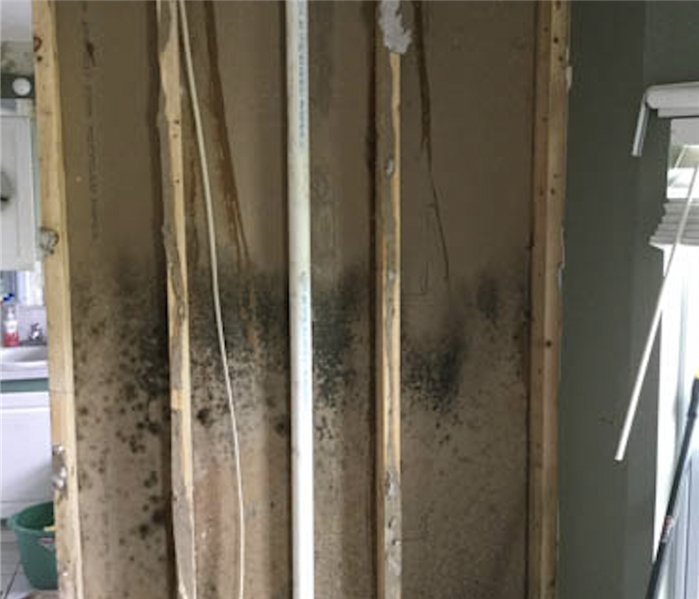 By following these simple mold prevention tips, homeowners can reduce the risk of mold growth and maintain a clean and healthy indoor environment.
By following these simple mold prevention tips, homeowners can reduce the risk of mold growth and maintain a clean and healthy indoor environment.
Mold is a persistent issue that can affect any home, causing damage to property and potential health risks for occupants. Preventing mold growth is crucial for maintaining a safe and healthy indoor environment. Here are three simple yet effective mold prevention tips that every homeowner should follow:
1. Control Moisture Levels
Moisture is the primary factor that contributes to mold growth. To prevent mold from taking hold in your home, it's essential to control moisture levels effectively. Here are some steps you can take:
Fix Leaks Promptly
Inspect your home regularly for any leaks in plumbing fixtures, roofs, windows, or doors. Even minor leaks can lead to moisture buildup and mold growth if left unchecked. Repair any leaks promptly to prevent water from seeping into walls, ceilings, or floors.
Improve Ventilation
Proper ventilation is essential for reducing humidity levels indoors and preventing moisture buildup. Ensure that your home is adequately ventilated, especially in areas prone to moisture, such as bathrooms, kitchens, and basements. Use exhaust fans or open windows to allow fresh air to circulate and moisture to escape.
Use Dehumidifiers
In areas with high humidity levels, such as basements or crawl spaces, consider using a dehumidifier to remove excess moisture from the air. Keeping humidity levels below 60% can help prevent mold growth and create a less hospitable environment for mold spores.
2. Monitor Indoor Humidity
Monitoring indoor humidity levels is essential for preventing mold growth. Ideally, indoor humidity should be kept between 30% and 50% to inhibit mold growth and maintain a comfortable indoor environment. Here are some tips for monitoring indoor humidity:
Use a Hygrometer
A hygrometer is a device that measures relative humidity levels in your home. Place hygrometers in different areas of your home to monitor humidity levels regularly. If humidity levels exceed 50%, take steps to reduce moisture and improve ventilation.
Address Condensation
Condensation on windows, walls, or other surfaces can indicate high humidity levels indoors. Wipe down surfaces regularly to remove condensation and improve ventilation to prevent moisture buildup.
3. Keep Your Home Clean and Dry
Regular cleaning and maintenance can help prevent mold growth by removing mold spores and eliminating sources of moisture. Here are some tips for keeping your home clean and dry:
Clean Regularly
Dust, dirt, and other debris can provide nutrients for mold growth. Vacuum and dust your home regularly to remove these contaminants and prevent mold from taking hold.
Dry Wet Areas Promptly
Spills, leaks, or flooding can create ideal conditions for mold growth. Clean and dry wet areas promptly to prevent moisture from lingering and mold from developing.
Remove Mold Immediately
If you discover mold in your home, it's essential to address the issue promptly. Clean moldy surfaces with soap and water or a commercial mold cleaner, and dry the area thoroughly. If the mold infestation is extensive, consider hiring a professional mold remediation service like SERVPRO® to ensure proper removal and cleanup.
By following these simple mold prevention tips, homeowners can reduce the risk of mold growth and maintain a clean, healthy indoor environment for themselves and their families. Regular maintenance, effective moisture control, and proper cleaning practices are key to preventing mold issues and ensuring peace of mind in your home.
Tips for Preventing Corrosion After a Fire
4/17/2024 (Permalink)
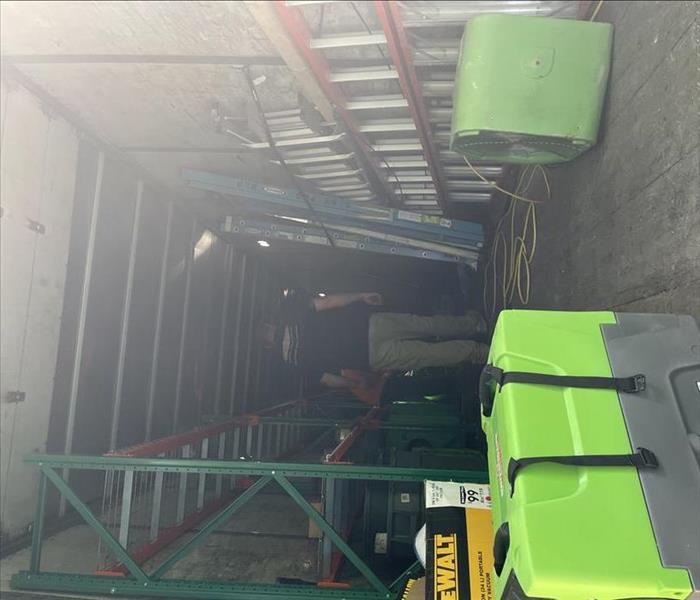 In this blog, we will explore tips for preventing corrosion after a fire.
In this blog, we will explore tips for preventing corrosion after a fire.
When a fire occurs, the damage extends beyond the visible destruction caused by the flames. One significant concern after a fire is the potential for corrosion to develop on various surfaces and materials due to the acidic byproducts of combustion. Corrosion can further compromise the integrity of the affected items and surfaces. In this blog, we will explore tips for preventing corrosion after a fire, helping homeowners and businesses minimize further damage and protect their property. By following these preventive measures, you can speed up the fire damage restoration process and reduce the overall cost of repairs.
Prompt Fire Damage Restoration
The most crucial step in preventing corrosion after a fire is to promptly initiate fire damage restoration. Contact professional fire damage restoration services, such as SERVPRO®, to start the cleanup and restoration process as soon as it is safe to do so. The faster restoration efforts commence, the less time corrosion has to develop and cause further damage.
Remove Moisture and Humidity
Moisture and humidity are primary catalysts for corrosion. After a fire, residual water from firefighting efforts and the presence of high humidity can accelerate the corrosion process. It is vital to remove any excess moisture from the affected areas promptly. Professionals will employ dehumidifiers, air movers, and other equipment to mitigate humidity levels and prevent further corrosion.
Clean and Neutralize Surfaces
Soot and smoke residues left behind after a fire are highly acidic, contributing to the corrosion process. Thoroughly clean all affected surfaces to remove these corrosive residues. Use appropriate cleaning agents, techniques, and equipment to ensure a comprehensive removal. Furthermore, neutralize the acidic compounds with specialized cleaning solutions to minimize the risk of corrosion.
Properly Ventilate the Area
Good ventilation plays a vital role in preventing corrosion. Adequate airflow helps dissipate moisture, reduce humidity, and prevent stagnant conditions that contribute to the corrosion process. Open windows, use fans or employ ventilation systems to maintain a continuous flow of fresh air throughout the affected space.
Protect Metal Surfaces
Metal surfaces are especially susceptible to corrosion after a fire. Apply a corrosion inhibitor or protective coating to vulnerable metal objects and surfaces to create a barrier against the corrosive effects of residual smoke and soot. Consult with professionals to determine the most suitable corrosion protection method for the specific metal surfaces in your property.
Tackle Electrical System Concerns
After a fire, electrical systems may be compromised due to heat or water damage. It is crucial to have a professional electrician evaluate and, if necessary, repair or replace damaged electrical components. Faulty wiring and electrical issues can accelerate corrosion and pose a significant risk of further damage and potential hazards.
Monitor and Maintain the Property
Regular inspection and maintenance play a key role in preventing corrosion after a fire. Stay vigilant and monitor the condition of your property's interior and exterior surfaces, plumbing systems, and electrical components. Address any signs of corrosion immediately to prevent it from spreading and causing further deterioration. Routine maintenance efforts can help identify potential corrosion concerns early on and allow for timely remediation.
Preventing corrosion after a fire is crucial for protecting the integrity and value of your property. By following these preventive measures and promptly initiating fire damage restoration with professional services like SERVPRO, you can minimize the risk of further damage and speed up the restoration process. Remember to address excess moisture, clean and neutralize surfaces, properly ventilate the area, protect metal surfaces, address electrical system concerns, and maintain your property through regular inspections. By taking these proactive steps, you can prevent corrosion and help restore your property to its pre-fire condition.
Mold and Home Value: How Infestations Affect Resale
3/13/2024 (Permalink)
As homeowners, we invest a significant amount of time and money in maintaining and improving our properties. However, there's a silent intruder that can significantly impact the resale value of your home—mold. In this blog post, we'll delve into the connection between mold infestations and home value and provide insights on how you can address this issue effectively.
Understanding the Impact
Potential homebuyers are increasingly vigilant about the condition of a property they are considering. Mold infestations not only affect the aesthetic appeal of a home but can also lead to structural damage over time. This makes it crucial to address mold issues promptly to maintain or increase your home's resale value.
Visible and Hidden Mold
Mold is not always visible to the naked eye. While some infestations are apparent, others may be hidden behind walls or beneath flooring. Both types can impact your home's value, and it's essential to address the issue comprehensively. Regular inspections, especially in moisture-prone areas like basements and bathrooms, can help identify and mitigate mold problems early on.
Professional Inspection and Remediation
To ensure a thorough assessment of your home's mold situation, consider hiring a professional mold inspection service like SERVPRO®. Our trained technicians can identify hidden mold, assess the extent of the infestation, and recommend effective remediation strategies. Professional remediation not only improves the overall indoor air quality but also safeguards your home's value.
Preventive Measures
Prevention is key when it comes to mold and home value. Implementing measures to control moisture levels in your home, such as proper ventilation and timely repairs, can significantly reduce the risk of mold growth. Regularly inspecting your property for signs of water damage and promptly addressing any issues can save you from potential headaches during resale.
Disclose and Document
If you've experienced a mold problem in the past, it's important to disclose this information to potential buyers. Being transparent about past mold issues and providing documentation of professional remediation efforts can build trust and demonstrate your commitment to maintaining a mold neutral home.
In the competitive real estate market, maintaining or enhancing your home's resale value is crucial. By understanding the impact of mold infestations and taking proactive measures, you can ensure that your property stands out positively in the eyes of potential buyers. For professional mold inspection and remediation services, trust SERVPRO to help safeguard your home's value and ensure a smooth resale process.





 24/7 Emergency Service
24/7 Emergency Service
